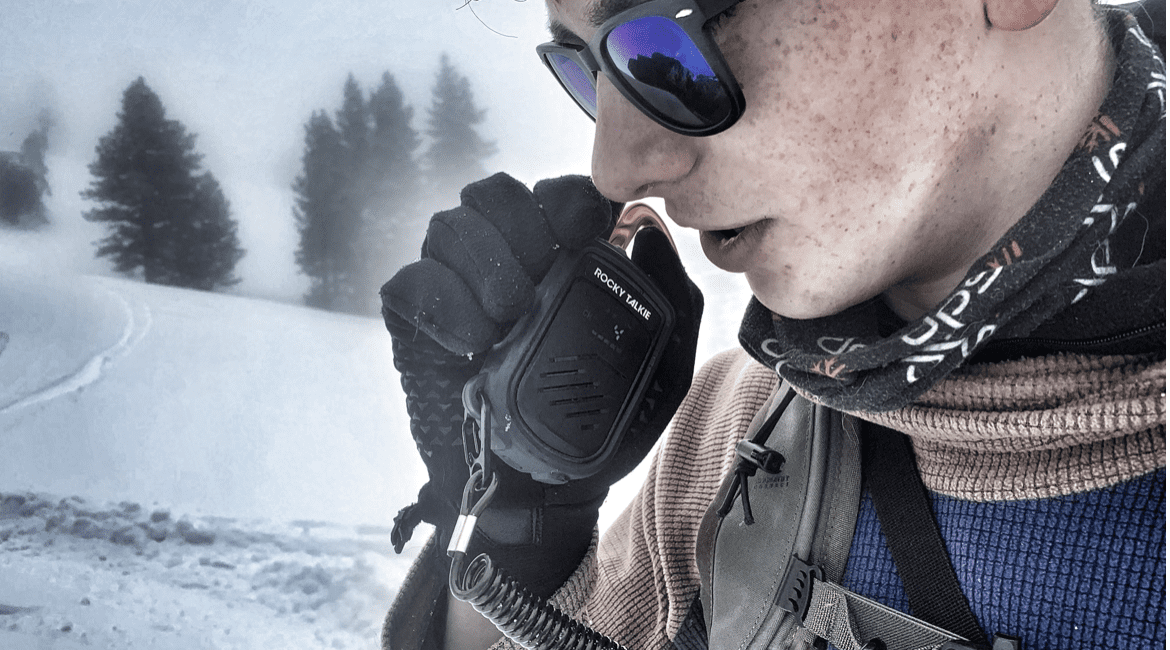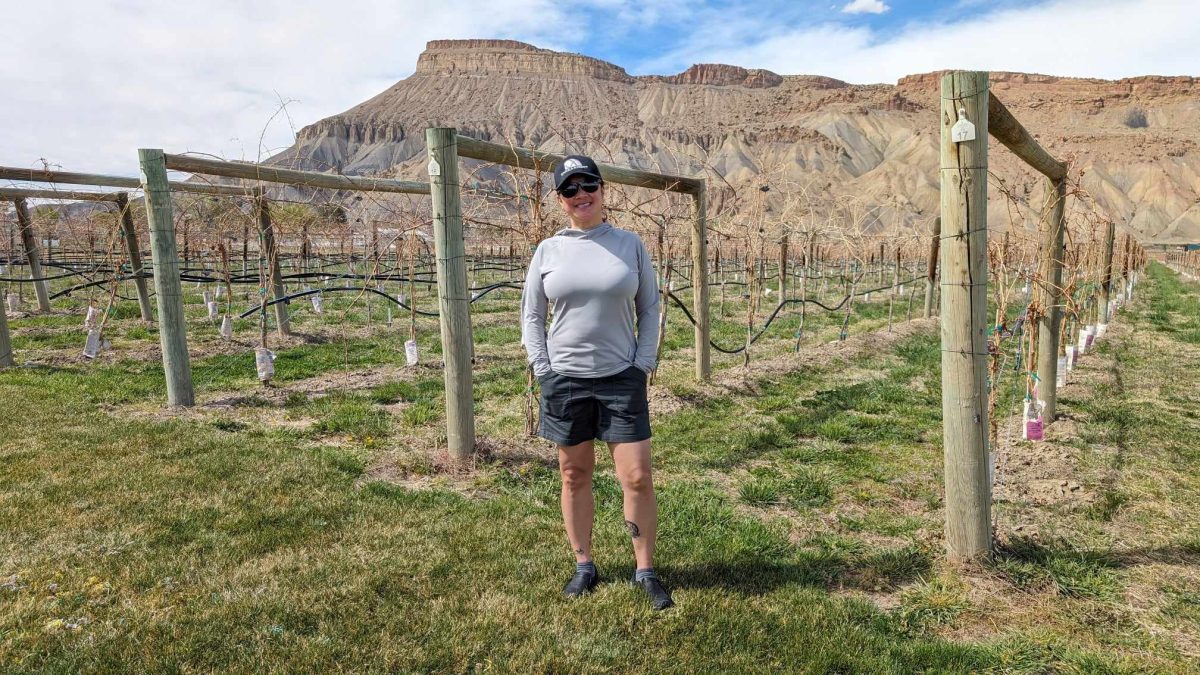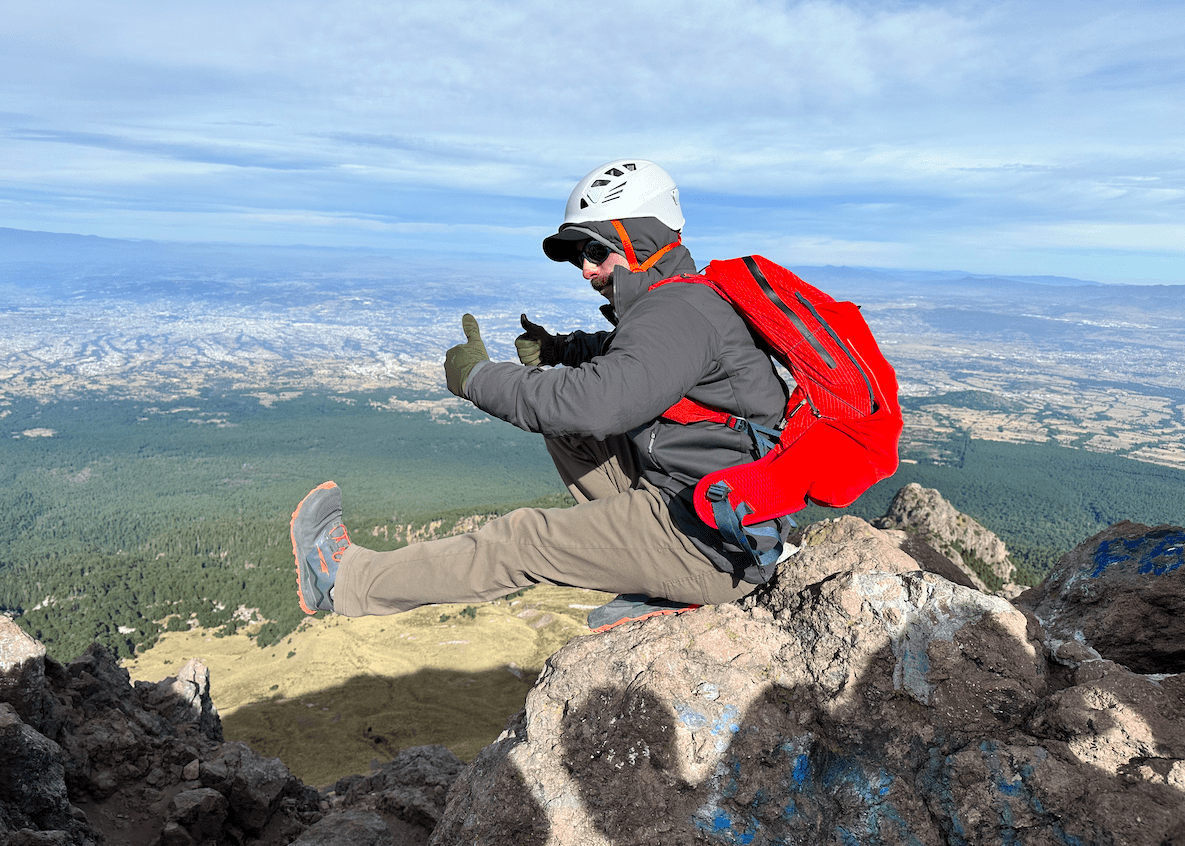Rocky Talkie – Why you want to consider “comms” and why these are the real deal
Wil Rickards
Spoiler alert, this review spells out why Rocky Talkie is a great purchase. There is a lot to tell you, and it is worth reading the whole article.
Rocky Talkie Review
Let me start with an explanation. I have eschewed walkie-talkies for years. Call me old school, for that matter, call me an old fart; I just noticed something happen with the advent of the cell phone’s popularity. People lost the commitment to looking after themselves. I was working on rescue teams at the time, and the evolution happened quicker than a TT racer accelerating from 0-60.
I was raised with the notion that outdoor adventures were about self-sufficiency. Suddenly, I was asked to fetch people who had sprained a wrist or become a little frightened. Don’t get me wrong; I am not oozing disdain or machismo as I write this. I was just disappointed that something I held dear had been lost.
The mountains were one of my last bastions where self-reliance was sacred. I equated this syndrome to an increased potential for communication. I didn’t want anything to do with it. Therefore, I usually looked for locations where there was no cell service to avoid the phenomena (and the crowds).
Earlier this season, I had a reality check. Narrowly avoiding a ride in an avalanche while skiing with your son will do that. (You can find the full story here.) There were several learning points, one of which was the need to give my partners clear instructions from a distance. I reached out to Rocky Talkie to see if I could review their units, met with Bryce, one of the partners in the venture, and here we are.

So why the 180º turnaround? My experience in December certainly gave me a case of the “what ifs” I don’t like to dwell in this place, yet a short, concentrated time visiting is a good thing. Watching an emotional trauma unravel and recognizing that it was avoidable made me want to up my game. How specifically can communication help with this?

Let’s start with an origin story. Bryce, who is tall and lean, not only maintains the appearance of a climber; he emits the confidence of someone who has had his fair share of adventures. When he tells a story, you listen. He described how Rocky Talkie came into existence; we were stood outside his apartment in a post-COVID street in Denver.
There were homeless shelters on the corner. It seemed apt; camps and towers, if anyone understands living simply, dirt bagging if you will, it is desert climbers. The story went like this Bryce and his partner Alex were climbing a Utah tower; I could smell the dry heat and red dust blowing as he talked. Suddenly all hell broke loose as a party above showered them in sandstone shrapnel.
The group was rapping off, their rope was too short, and an epic ensued as they could not hear each other’s screams over the wind. It was not the first time the two friends had witnessed how a lack of communication had led to a close call. The incident broke the camel’s back; there was a problem that needed solving. Alex has a Ph.D. in Physics, and Bryce an MBA; this climbing team had the skillset to find a solution, and they hatched a passion project.
When I first started climbing, I was taught a tug system on the rope to communicate specific things. Three tugs – I am safe, Three tugs – climb when you are ready. Three tugs – I am climbing. Three tugs – start climbing. It worked, kind of.
But, when poised on a windy sea cliff, the swell booming and the gulls screaming, voices are often carried away and leave you in a solitude best reserved for monks. Don’t get me wrong; these enforced hermitages are part of what drew me to climbing and the mountains in the first place. Over time you develop a system of communication that is based on experiences with your partners.
It cannot be written or spoken. It is a beautiful thing matching the surroundings in which they occur. It takes time, though. And even then is sometimes open to interpretation. Being able to provide essential information can make a big difference to the safety of an experience.

I ski more than climb these days. Distances between partners are now longer. Line of sight is not possible more often. Skiing the trees or using havens in avalanche terrain means you are occasionally not going to be able to talk, having started a run. The thing is, there are frequently things to communicate after collecting data by skiing a line.
The day of our avalanche, I was thinking about how if I had skied the line, I would have wanted Cai to ski on the right side of my tracks, and I would not have been able to tell him. That would have led to a scared dad moment. I think that was the point that I decided we were not going to ski without comms in the backcountry again.
Yet there is way more to it than that. I hate being underneath or above other parties when wild skiing, especially in avalanche terrain. Setting off an avalanche on top of someone or having one triggered on you is the stuff of nightmares. The thing is, you sometimes do not know it is happening until it is too late.
Increasingly, in popular areas, there is the suggestion to use a specific frequency. This way, you know who is around and can find out where they are. I wonder if the Wilson Glade Avalanche tragedy in February would have had a different result if the two parties had known where each other were. Or, if the tragedy at Ophir, CO would have produced a different outcome if the whole party had been able to talk with one another. Again, what-ifs do not help in retrospect, yet they can point the way to evolved future practices.
Since having the Rocky Talkies, I have already seen several benefits beyond setting up good camera angles. Coming into a zone alone and knowing friends are there or will be there has meant I have met people and therefore not skied solo. On one occasion, a friend was even delivered to us courtesy of radio contact. I have also found out people were in the zone and figured out where they were due to their chatter.
Since the incident, my son and I, when we are skiing significant terrain, usually travel with at least one other person. However, even when by ourselves, we can keep each other in the loop. If we find an unexpected rollover, we can alert the other and regroup. If a line requires a specific approach, we can provide a warning.
If the trees prove thick, we can look at our watches and share our altitude and find out who is above the other facilitating reassembly. Because we can communicate, I now tend to avoid marginal “islands of safety” within shouting distance. Instead, go a little farther to a spot that is not in avalanche terrain and provides a better visual.
This is all new to me; however, I have already noticed my practices changing for the better. Somewhat akin to learning navigation with a map before GPS, I encourage people to practice without comms so that they can cope if their system fails. I also believe that analog thinking is more proactive, whereas digital thinking is reactive. Life is best when you bring analog thinking to digital systems. Reach out if you want me to explain that one more. It may be worth a post in its own right.
So what about the Rocky Talkies? Firstly, these things are superbly robust. They remind me of a good avalanche beacon. Electronics are not usually the weak point of a system; the housing is. Rocky talkie is an Acrylonitrile Butadiene Styrene (ABS) unit enclosed in a solid Thermoplastic Polyurethane (TPU) sleeve. Rocky Talkie chose the TPU because it is highly scratch and impact-resistant and cannot be stretched out.
The buttons all feel meaty and easily operable with gloves on. The LED screen is shatterproof. The unit can be suspended from the climber’s full-weight karabiner held captive by the rubber housing. Even better, a lanyard is spring coiled and stays out of the way yet can stretch. It would be a major feat to drop and lose this thing. This is a well-thought-out piece of kit designed to be used by the adventurous. Being a single unit, it is lighter and takes less space than a two-part unit. This fact does mean that in cold weather, you have to take care of the battery.
Bryce shared that they invest a high percentage of the cost of the unit in the battery. Quality batteries mean long-lasting batteries with good charge life; in the Rocky Talkies’ case, that is 120 hours on standby. Transmission and reception decrease this time.
Five hours of charging with the included block and USB-C cable fills the battery back up. It is worth noting that Lithium-Ion/Lithium-Polymer batteries fare better in the cold than most. Rocky Talkie tested multiple and chose a Lithium -Polymer battery with specific chemistry that makes it more resistant to cold. They suggest -20º F is the point at which cold takes a toll. -20º is when the cold smoke is so light you feel God-like.
So remember to put your radio inside your jacket when creating that epic powder Insta content – and keep it at least 20 cm away from your avalanche beacon. I must say I have been impressed by battery life so far. It may also have something to do with the efficient electronics that incorporate a power-saving mode and screen that turns off after 10 seconds.
If you want to see a great endorsement of the cold-weather performance, check this out.

I previously glossed over the buttons; there are five of them. The On/Off switch, a channel flipper, the Push To Talk (PTT) button, and Volume Up and Down.
When you power it on, it tells you the percentage of battery life remaining. You can check this any time by quickly depressing the On/Off switch.
The flipper serves as a lock, provides a scan feature, and helps to scroll through the 22 channels.
The volume up button also allows you to switch between high and low power – I suggest using the full 2 Watts (H) to optimize the range.
The volume down also allows you to engage Privacy Codes, which further divides the 22 channels giving you less cluttered airwaves.

So how does it compare with other comms units? I say favorably. As previously stated, it is designed to be dependable, burly, and serve the adventurous soul well. Its weight and size make it packable. The price point lies between the mass-produced units you can buy in Walmart and other established adventure market specialized units. It works with those units and uses the same frequencies and Privacy Codes.
By being one unit, it is simple. There is less to break, and you have instant availability to all the features. It does mean you have to protect the battery in cold weather. Maybe Rocky Talkie would consider designing and making a cold-weather sleeve.
The other thing I hope they ponder is being able to monitor two channels simultaneously and transmit consecutively. Increasingly specific zones are using a single frequency for all parties to communicate with each other. It is still useful to have your own Channel and Privacy Code to not blow up the airwaves.
Bryce and I elbow bumped as he turned to climb the tower. Looking at the shiny new unit in my hand, I realized my opinions were about to change. Here was a well-thought-out design, built to solve a known issue. I jumped in the car, drove to a trailhead, and went skiing. It was a great day. Good communication makes the world a better place.

Wil Rickards

Wil was born in North Wales and steeped in its rich maritime, mountain and river folklore. In response to the request to “get a real job” he became first a teacher then professor of adventure education.
He then emigrated to where the sun shines for 300 days and snowfalls for 100 (Colorado). During more than 25 years as an outdoor educator, he worked Scottish winter seasons, taught canoeing, climbing, kayaking, and skiing throughout the States, Europe, and Australia. He also regenerated the University of Alaska Anchorage’s Outdoor Education program. His biggest adventure (by far) is fatherhood. It has also been the inspiration for his website www.wherethefruitis.com.
Things he likes to do include (middle) aging gracefully, and skiing (telemark) aggressively. He is happiest outdoors with a good view, good company, good weather/snow and the residue of self-powered adventure; sweat, a manic grin, and wild eyes.













Leave a Reply